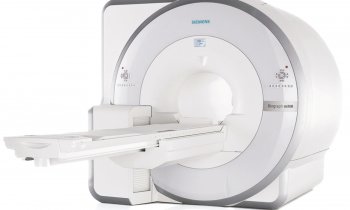France ranks low in Europe for MRI equipment
On average, European countries possess 17 MRI machines per one million people. With only 9.4 MRI machines per million people, France ranks between Portugal and Turkey, putting it among the least well-equipped in Europe, according to the Société Française de Radiologie.
It’s not a flattering assessment and quite a paradox that in the MRI stakes its rank is so lowly, considering that France is the European country that spends the most on healthcare – second only to Germany. France has four times less MRI machines than neighbouring Germany and two times less than Spain or Italy. In all, some 592 MRI scanners are operational (40 were installed only last year), which is simply insufficient according to radiology experts. France stands far behind Japan, or the USA, for the best rate of equipment and falls far below its own national programme to combat cancer (Plan Cancer 2009- 2013).
For the optimum handling of the disease, this recommended the availability of 10 MRI scanners per one million people by 2011 and a maximum of 10 to 15 days wait for patients. In reality, the average wait still remained at 32.2 days in 2011, compared to 34.5 days in 2009, and up to 55 days – almost two months – in the most underprivileged areas (Pays de la Loire, Poitou-Charente or Alsace). Considering the ageing population, which leads to new patho logies and new needs, it is considered that 63% of the French population is subjected to a waiting time exceeding 30 days, compared to 50% in 2006. Since its creation in 1999, the ISA (Imagerie Santé Avenir), which gathers medical imaging information, has annually evaluated the delay before obtaining an MRI appointment. After having repeatedly pointed out the French backwardness in terms of equipment, in recent years ISA has been even more preoccupied by the increasing geographic inequalities. In some areas of the country patients might wait up to 75 days!
The low rate of MRI ownership is highly problematic. An MRI examination not performed immediately after the first symptoms of diseases that compress the spine means a patient’s use of his legs might be totally impaired. Additionally, the chances of survival are greatly reduced if a patient has to wait for a few weeks of an MRI of the brain. A new report from the ASN (Authority for Nuclear Safety) has stressed the necessity to ensure an improvement in radiological performance. In France, irradiation in the medical environment has increased by 50% over the last five years, mainly due to the multiplication of scanners. France used to trail behind in this respect, but has somewhat caught up with its neighbours in terms of equipment.
Now the country has 1,200, considered quite satisfactory. Nonetheless, the low supply of MRI scanners is regrettable, according to the French radiologists, especially because the technology uses electromagnetic energy rather than X-rays and could be used instead in a lot of cases. Radiologists, who share with the physicians the responsibility and decisions on the most appropriate therapeutic methods to be chosen, are sorry to report that, in 2011, the Guide du bon usage des examens d’imagerie, written in collaboration with the Haute Autorité de Santé (HAS) and the Autorité de Sureté Nucléaire (ASN), cannot be applied simply because of the insufficient number of MRI machines. For the same pathology, a German patient has three times higher chance of an MRI examination than his French counterpart. According to specialists, some 350 more machines – each costing about €1 million – will be needed in the next four or five years.
Report: Annick Chapoy
20.06.2011











